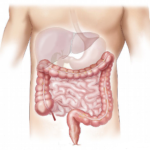
Overview
Gum cancer, also known as gingiva cancer, is a type of oral cancer that originates in the gums, posing significant risks if left untreated. Though less common than other cancers, it remains a critical health issue, especially for those with certain lifestyle habits or health conditions. Recognizing the early signs and understanding the risk factors can lead to earlier detection and improved outcomes. This article provides a comprehensive look at gum cancer, its symptoms, causes, treatment options, and preventive measures
Table of Contents
What is Gum Cancer?
Gum cancer is a form of oral cancer that develops specifically in the gum tissues surrounding the teeth. Unlike other forms of mouth cancer, which can affect various parts of the oral cavity (such as the tongue, cheeks, and roof of the mouth), gum cancer targets the gingival tissues. Cancerous cells in the gums can disrupt oral function, cause pain, and potentially spread to other parts of the body if not treated.
Most cases of gum cancer are classified as squamous cell carcinomas, which means they begin in the flat, thin cells lining the gums. The gums play a vital role in holding teeth in place and protecting the underlying bone structures. As cancer progresses, it can weaken these essential functions, leading to additional oral health issues.
Signs and Symptoms of Gum Cancer
Identifying gum cancer early can significantly impact the effectiveness of treatment. Here are the common signs and symptoms:
- Persistent Swelling: Swelling or thickening of the gums that does not resolve over time could indicate an abnormality.
- Sores or Ulcers: Open sores or ulcers that bleed easily or do not heal within two weeks are a red flag.
- Red or White Patches: Patches of red or white tissue on the gums may be an early sign of abnormal cell growth.
- Bleeding: Frequent or unexplained bleeding from the gums, especially during brushing, may suggest a more serious condition than typical gingivitis.
- Loose Teeth: Cancerous growths can weaken the supporting gum tissue, leading to loose or shifting teeth.
- Pain or Discomfort: A constant pain in the gums or jaw that doesn’t resolve could indicate deeper issues.
- Difficulty in Chewing or Speaking: As the cancer progresses, it may impair normal functions like chewing or speaking.
Since these symptoms can be mistaken for other dental issues, such as gum disease or infections, it is crucial to consult a healthcare professional for proper evaluation if any of these signs persist
Related : Foods to Eat When You Have the Flu
Risk Factors
While anyone can develop gum cancer, certain risk factors significantly increase the likelihood. Understanding these factors is essential for proactive prevention and early detection.
- Tobacco Use: Smoking or using smokeless tobacco products is a major risk factor for gum cancer. The carcinogens in tobacco damage cells, increasing the risk of abnormal growth.
- Excessive Alcohol Consumption: Heavy alcohol use can irritate the gums and weaken the immune system, compounding the risk when combined with tobacco use.
- Poor Oral Hygiene: Neglecting dental care can lead to chronic gum disease, which creates a favorable environment for abnormal cell growth.
- Human Papillomavirus (HPV): Certain strains of HPV are linked to various cancers, including those in the oral cavity.
- Genetic Predisposition: A family history of oral cancer may increase the risk.
- Age and Gender: Gum cancer is more prevalent in individuals over 50 and tends to be more common in men.
Each of these risk factors can independently contribute to gum cancer, but a combination—like smoking and drinking heavily—significantly raises the risk
Related : 10 Health Benefits of Coffee and Tea
Diagnosis of Gum Cancer
Diagnosing gum cancer accurately involves several steps:
- Visual Examination: A dentist or doctor will first conduct a visual inspection to identify any abnormal lesions or growths in the gum tissue.
- Biopsy: If a suspicious area is found, a biopsy is often performed, where a small sample of gum tissue is removed and examined under a microscope to check for cancerous cells.
- Imaging Tests: Tests like CT scans, MRI, or X-rays may be used to determine the extent of the cancer’s spread to nearby tissues, bones, or lymph nodes.
- Endoscopy: In cases where a deeper inspection is needed, an endoscope (a thin, flexible tube with a camera) may be used to examine the mouth and throat areas more thoroughly.
Prompt and accurate diagnosis is key to determining the cancer stage and choosing the most effective treatment approach.
Stages of Gum Cancer
Gum cancer progresses in stages, which describe the size and extent of cancer spread. These stages are crucial for guiding treatment and estimating prognosis
Related : Top 10 Causes of Blood Sugar Swings and How to Manage Them
- Stage I: Small tumor limited to the gums, typically less than 2 cm in size. The cancer hasn’t spread to nearby lymph nodes or other areas.
- Stage II: Tumor between 2-4 cm in size, still confined to the gum tissue.
- Stage III: Tumor larger than 4 cm, or it has spread to one nearby lymph node but not other body parts.
- Stage IV: Advanced stage where cancer has spread to nearby structures, lymph nodes, or distant body parts.
Understanding the stages helps both patients and healthcare providers plan an effective course of action. Early-stage detection (Stage I or II) generally results in higher survival rates, while later stages require more intensive treatment.
Treatment for Gum Cancer
Treatment for gum cancer depends on the stage and location of the tumor, as well as the patient’s overall health. Here are the primary treatments:
- Surgery: Surgery is often the first-line treatment, especially if cancer is in its early stages. It may involve removing the tumor and a small margin of healthy tissue around it to prevent recurrence.
- Radiation Therapy: High-energy beams target and kill cancer cells. This method is sometimes used post-surgery to ensure all cancerous cells are destroyed.
- Chemotherapy: Medications are used to kill or slow the growth of cancer cells. Chemotherapy can be a standalone treatment or used alongside surgery and radiation for more advanced cases.
- Targeted Therapy: Targeted drugs block specific molecules that help cancer cells grow. These therapies are often preferred when traditional methods have limited efficacy
Related : How to Get Rid of a Cold Fast
Each treatment comes with potential side effects, so it’s essential to work closely with an oncologist to weigh the benefits and risks of each option.
Coping and Recovery
Dealing with gum cancer can be challenging both physically and emotionally. Here are some tips to support recovery and manage side effects:
- Nutrition : Soft, nutrient-dense foods help maintain strength without irritating the gums.
- Pain Management: Medications and relaxation techniques can help manage pain from treatment side effects.
- Emotional Support: Connecting with support groups or counseling services can provide emotional relief.
Lifestyle modifications, such as avoiding tobacco and alcohol, along with regular dental check-ups, can also aid recovery and reduce the chances of recurrence
Related : Superfoods for Your Bones to Bone Health
Prevention and Oral Health Tips
Preventing gum cancer begins with lifestyle choices and oral health practices:
- Quit Smoking: Reducing tobacco use is the single most effective preventive measure.
- Limit Alcohol : Moderation or avoidance can lower the risk.
- Maintain Oral Hygiene: Regular brushing, flossing, and dental check-ups reduce the chances of infection and inflammation in the gums.
- Routine Self-Exams: Regularly checking for any changes in the mouth can lead to early detection.
- Healthy Diet: Consuming a balanced diet rich in fruits, vegetables, and lean proteins supports immune function and overall health.
By following these preventive steps, individuals can significantly reduce their risk of developing gum cancer
The Takeaway
Gum cancer is a serious health condition that requires awareness, early detection, and a proactive approach to treatment. Recognizing symptoms, understanding risk factors, and prioritizing preventive measures are essential steps in reducing the prevalence of this disease. If you notice any unusual changes in your gums or oral health, consult a healthcare professional promptly. Early action can make a substantial difference in managing and overcoming gum cancer
Related : How to Care for Your Kidneys: Easy 12 Tips
Frequently Asked Questions
What are the first signs of gum cancer?
The first signs of gum cancer can include persistent swelling, red or white patches on the gums, sores or ulcers that do not heal, frequent bleeding, and unusual pain or discomfort in the gums. If you experience any of these symptoms for more than two weeks, consult a healthcare professional for evaluation
How is gum cancer different from gum disease?
While gum disease (like gingivitis or periodontitis) is caused by bacterial infections and leads to inflammation and bleeding, gum cancer involves the growth of malignant cells in the gum tissue. Although both conditions affect the gums, gum cancer requires different treatments, often involving surgery, radiation, or chemotherapy.
Who is at higher risk of developing gum cancer?
People who use tobacco (smoking or chewing), consume excessive alcohol, have poor oral hygiene, or are exposed to certain strains of HPV are at higher risk of developing gum cancer. Age, gender (higher risk in men), and family history of cancer may also increase susceptibility.
Can gum cancer be prevented?
While there is no sure way to prevent gum cancer, you can reduce your risk by avoiding tobacco, limiting alcohol, maintaining good oral hygiene, eating a balanced diet, and scheduling regular dental check-ups. Being aware of early symptoms and acting promptly also improves the chances of successful treatment if detected early












